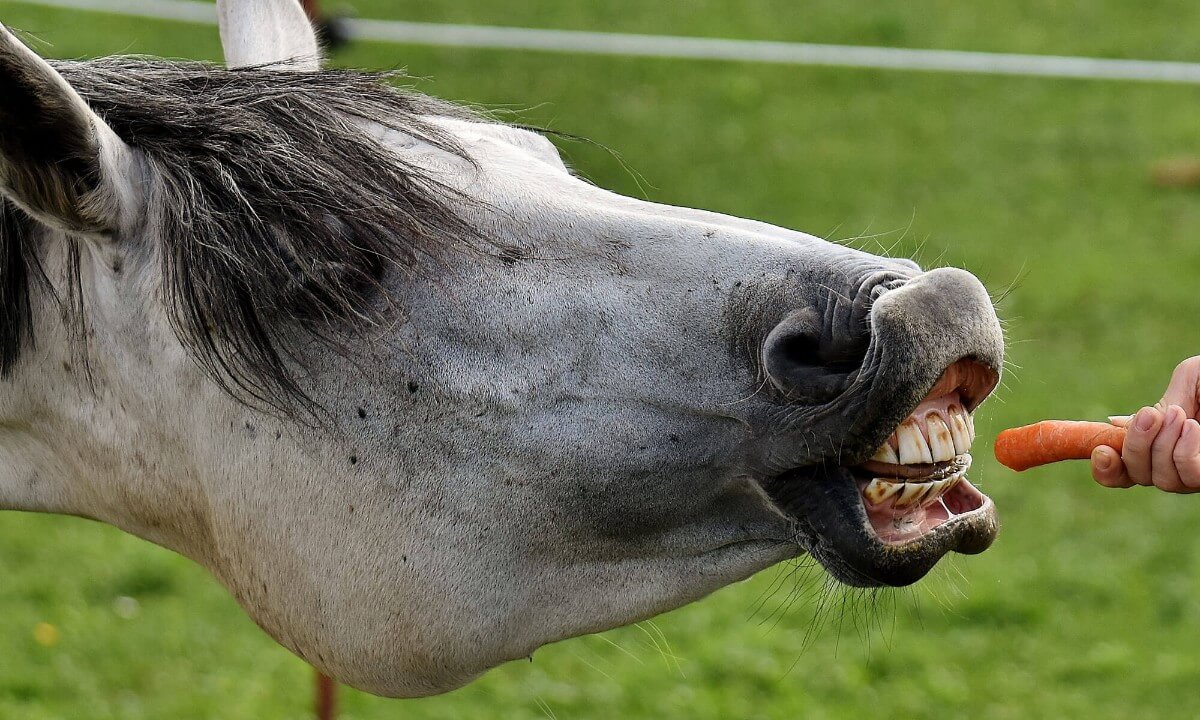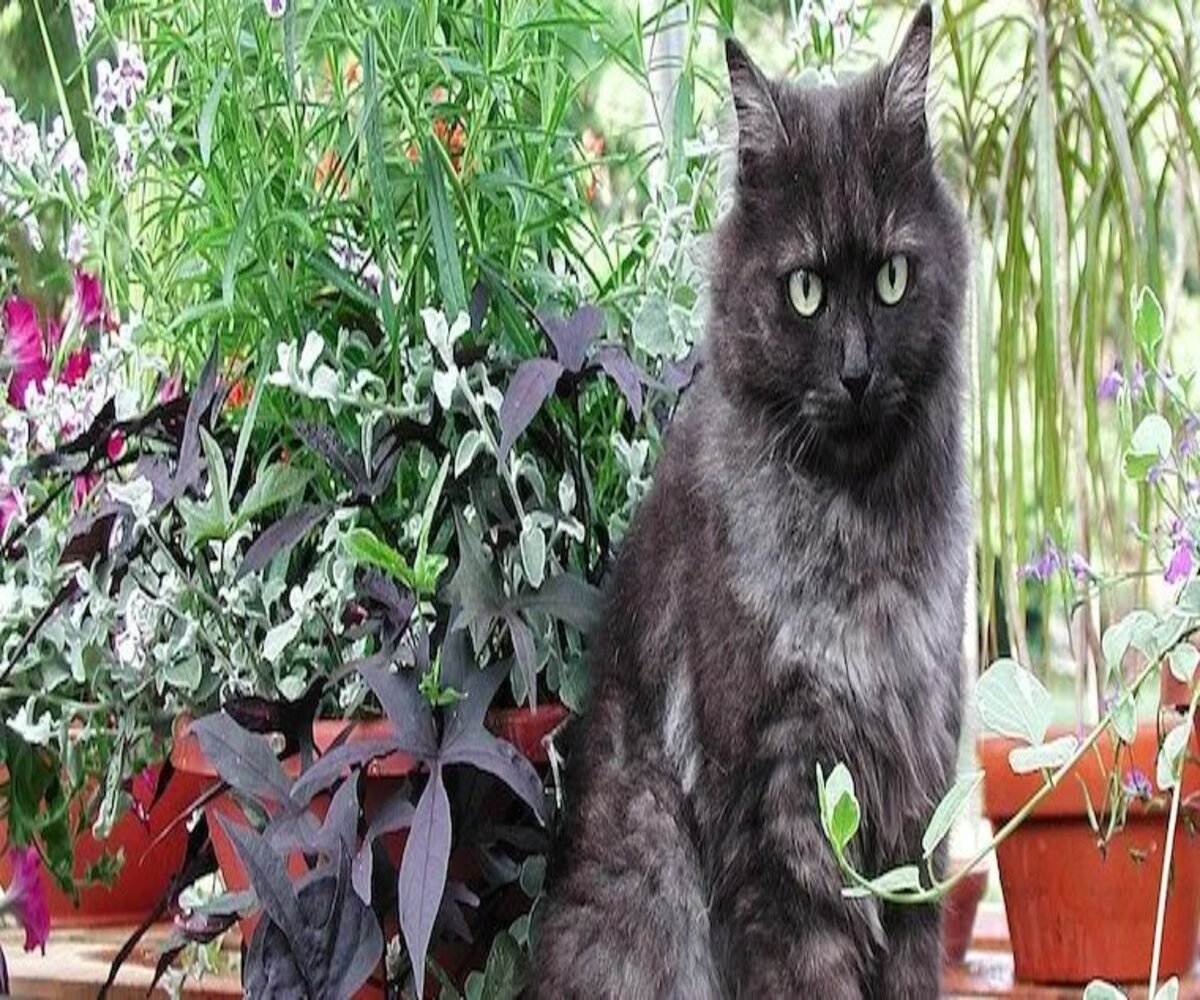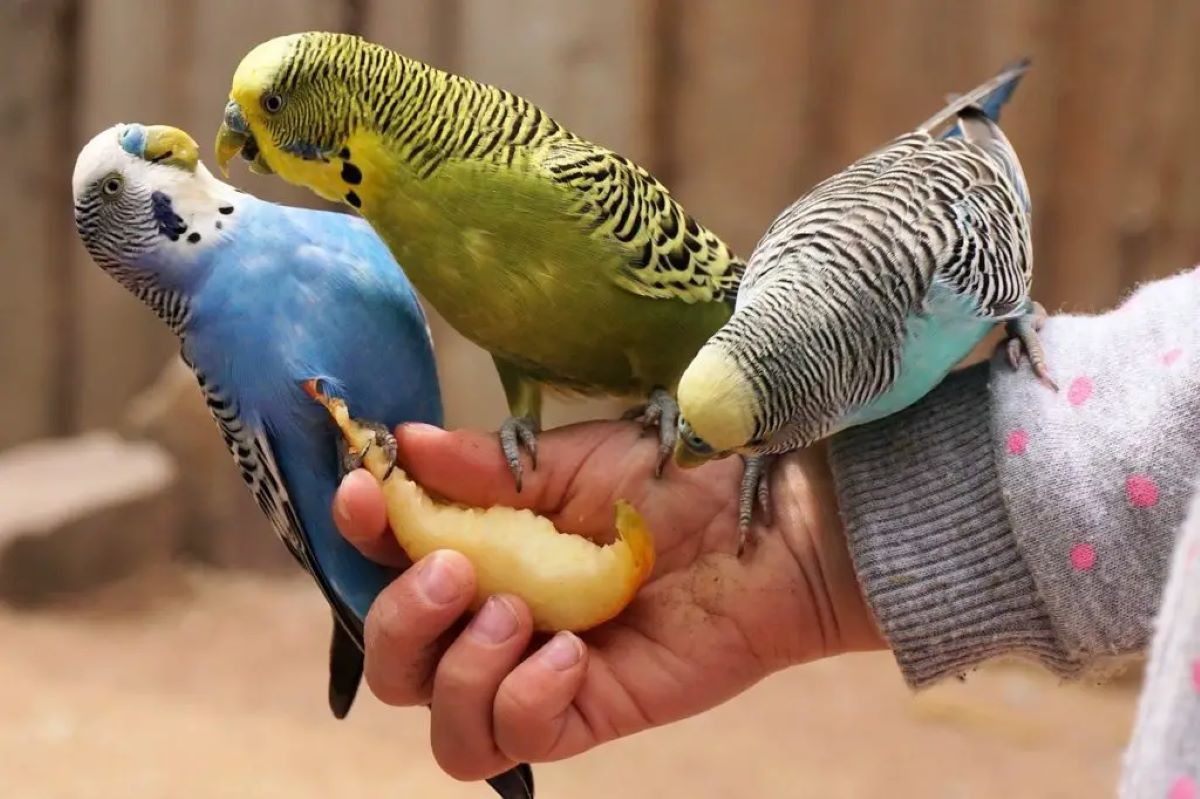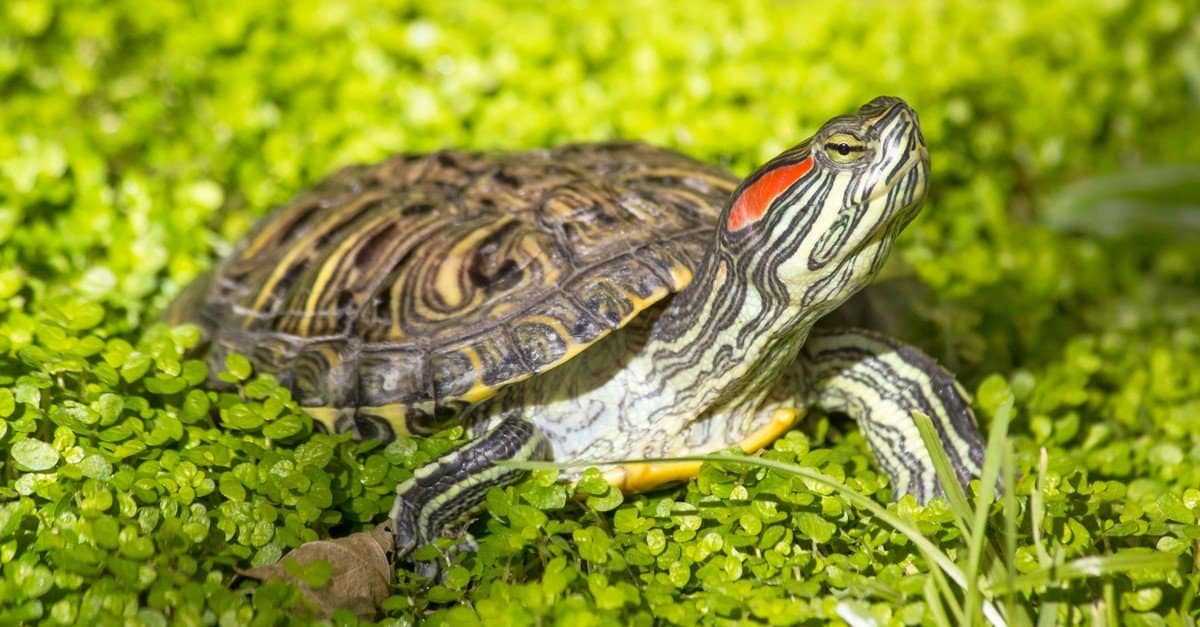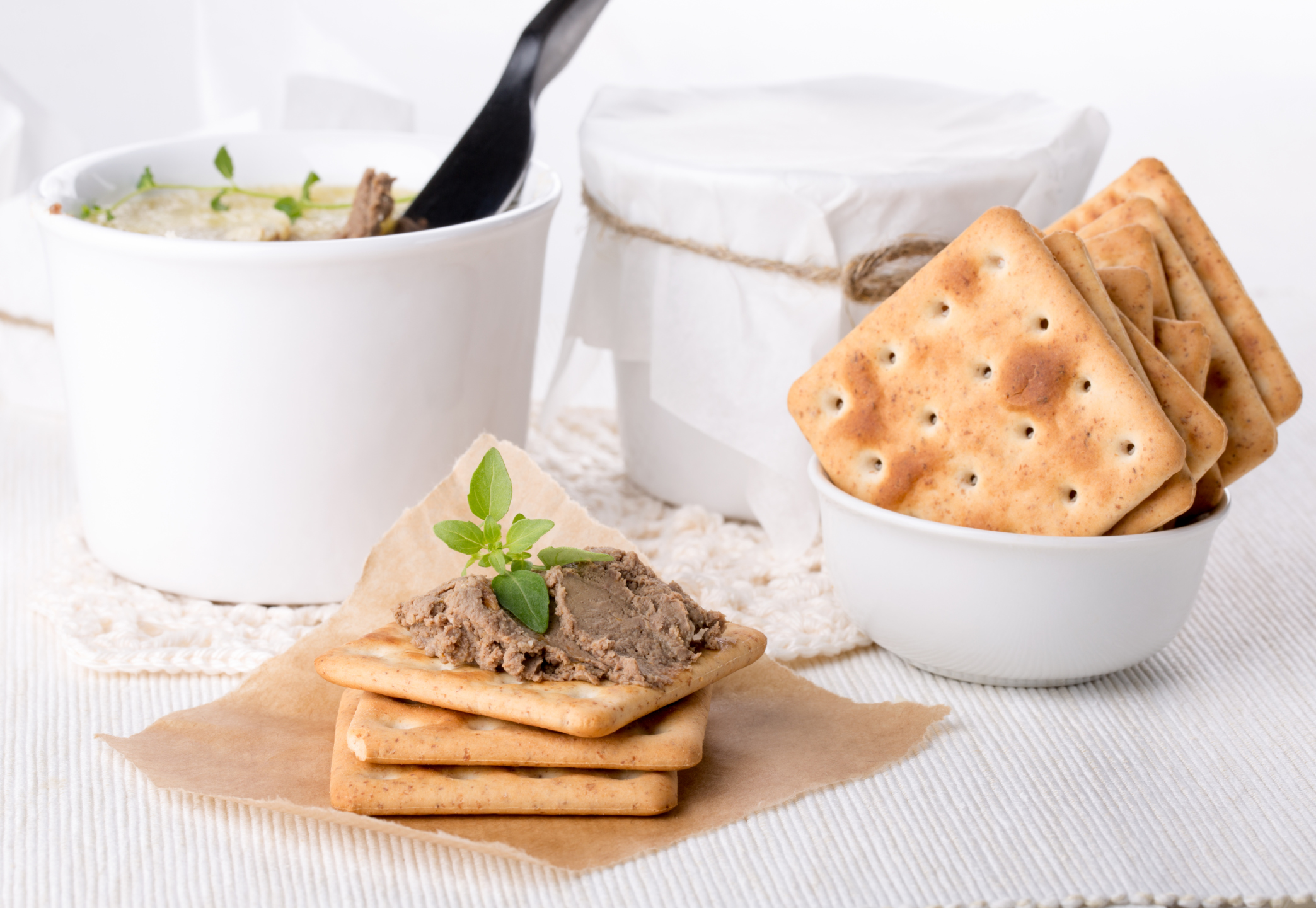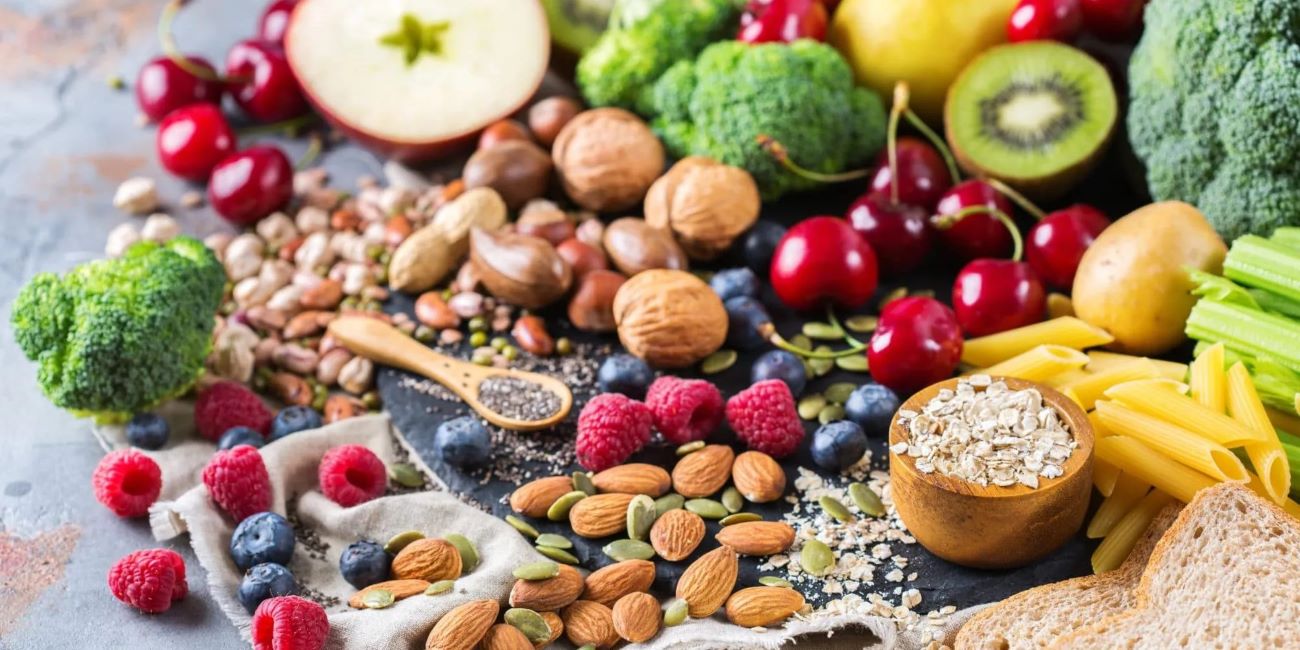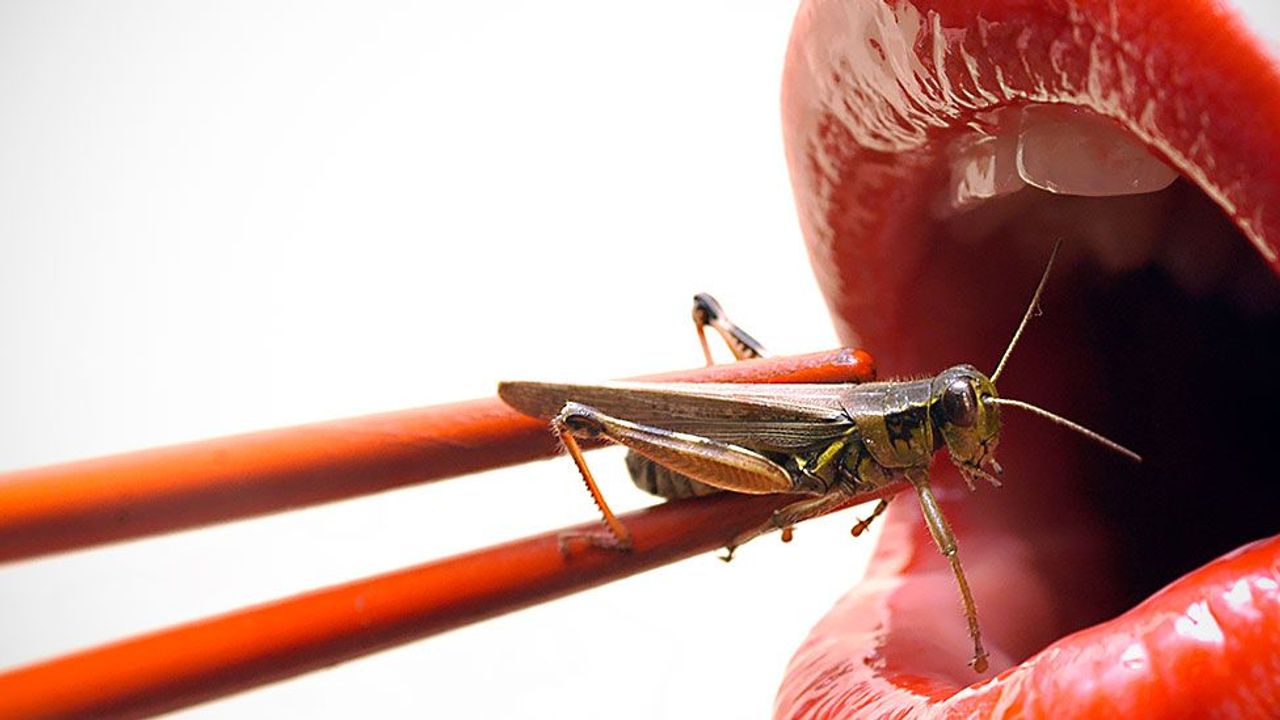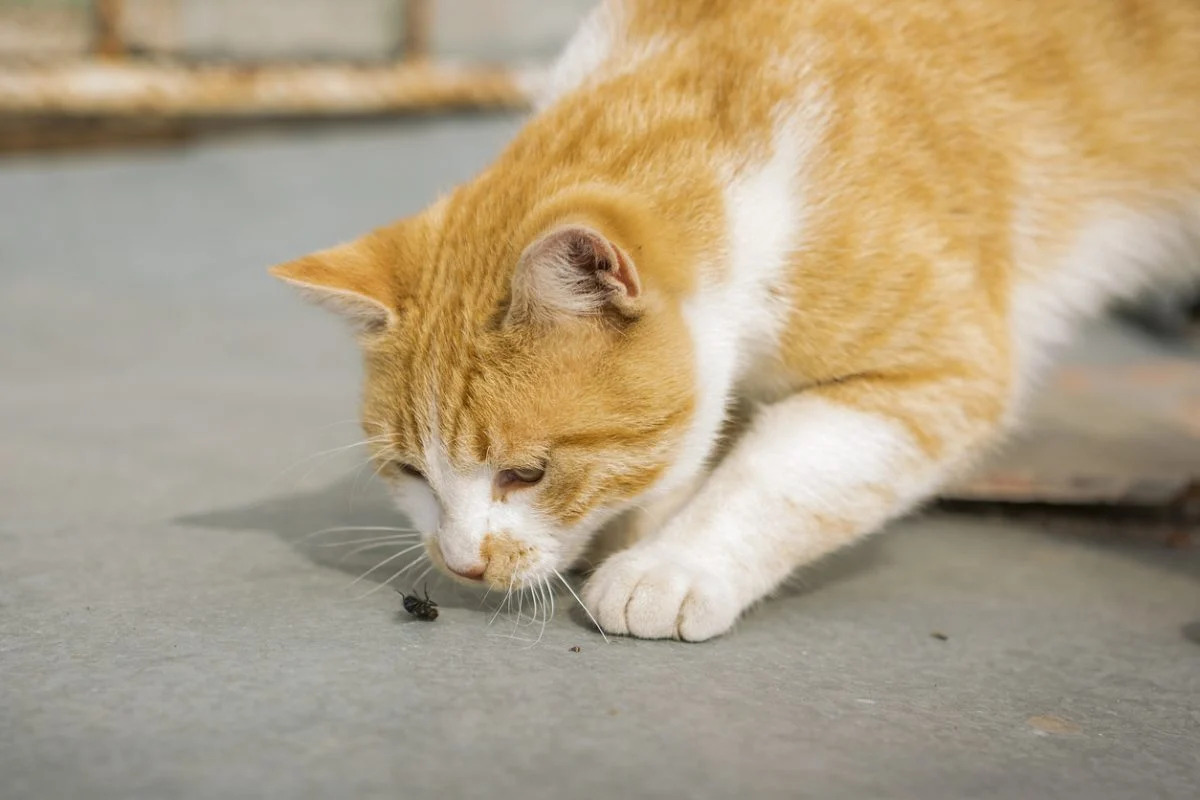Home>Gardening News and Trends>Latest News>What Vegetables Can Cats Eat
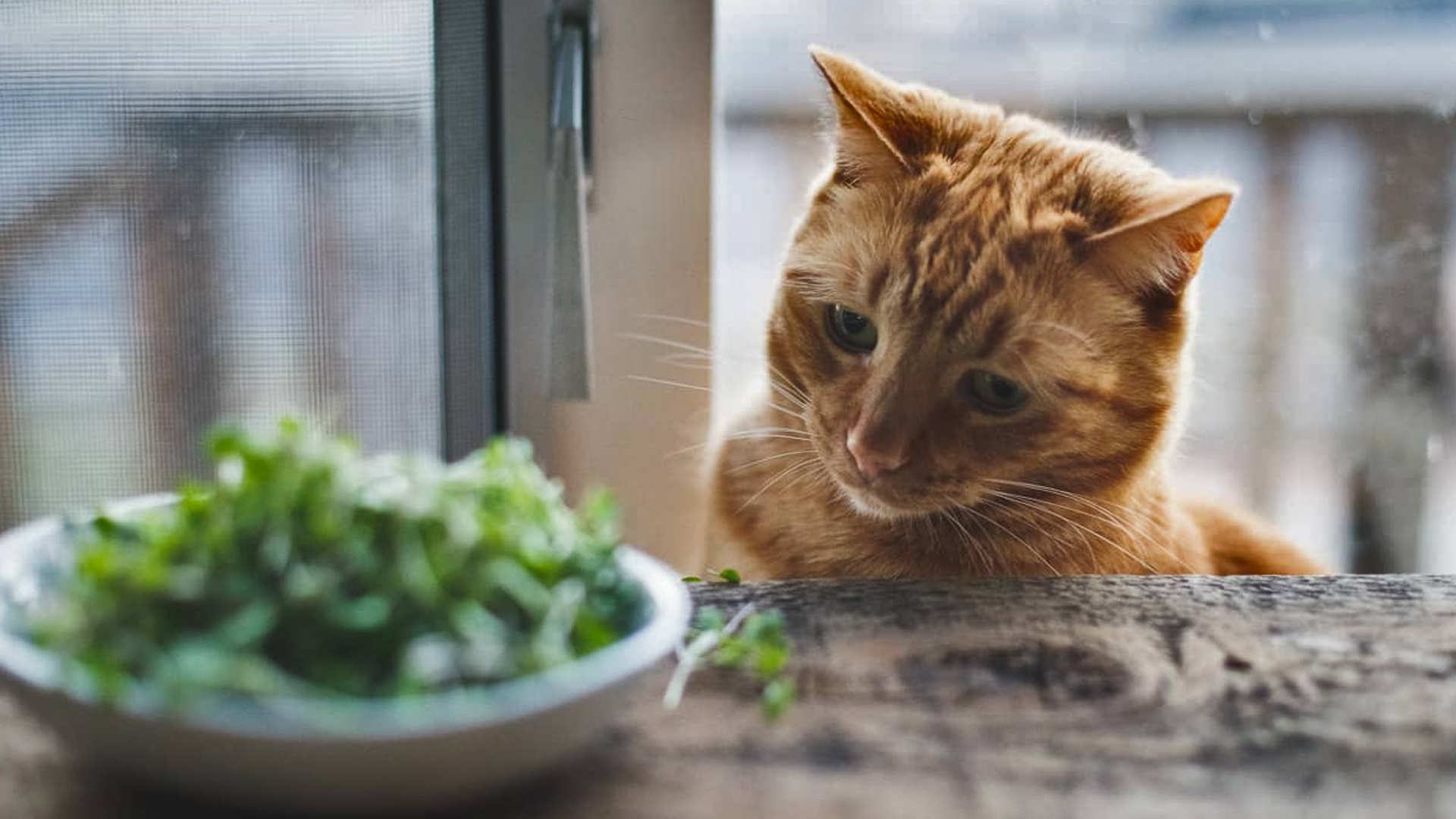

Latest News
What Vegetables Can Cats Eat
Modified: January 22, 2024
Discover the latest news on what vegetables cats can safely consume. We provide valuable insights and recommendations for a healthy feline diet.
(Many of the links in this article redirect to a specific reviewed product. Your purchase of these products through affiliate links helps to generate commission for Chicagolandgardening.com, at no extra cost. Learn more)
Table of Contents
Introduction
Cats are known for being strict carnivores, thriving on a diet that consists mainly of meat. However, incorporating vegetables into their diet can offer a range of health benefits. While cats have different dietary requirements than humans, certain vegetables can be a nutritious addition to their meals.
Vegetables provide cats with essential vitamins, minerals, and fiber that support their overall well-being. They can help improve digestion, maintain a healthy weight, and prevent certain conditions such as constipation. However, it is important to note that not all vegetables are suitable for cats.
In this article, we will explore why cats can benefit from consuming vegetables and discuss specific vegetables that are safe for them to eat. We will also highlight some vegetables that should be avoided due to potential harm to feline health.
While it’s important to consult with a veterinarian to understand your cat’s specific dietary needs, incorporating safe vegetables into their diet can promote a balanced and healthy lifestyle. Let’s delve into the world of feline-friendly vegetables and discover the ones that can provide nutritional value to our feline companions.
Why Do Cats Need Vegetables?
As obligate carnivores, cats have evolved to primarily consume meat to fulfill their nutritional needs. However, some vegetables can offer unique benefits to their diet. Here are a few reasons why cats may benefit from including vegetables:
- Added Nutrients: While meat provides essential proteins and fats, vegetables can supply additional vitamins and minerals that contribute to overall health. These nutrients include vitamin A, vitamin C, vitamin K, potassium, and dietary fiber.
- Digestive Health: Vegetables contain fiber, which can aid in digestion and prevent constipation in cats. This is particularly important for cats that may struggle with hairballs or irregular bowel movements.
- Weight Management: Some vegetables, such as green beans and carrots, are low in calories and can be used as a healthy alternative to processed treats. Adding these vegetables to their diet can help cats maintain a healthy weight and prevent obesity-related issues.
- Hydration: Certain vegetables, like cucumbers and zucchinis, have a high water content. Including these vegetables in a cat’s diet can contribute to their overall hydration levels, especially if they’re not avid drinkers.
- Dental Health: Chewing on crunchy vegetables, such as carrots, can help promote dental hygiene by removing plaque and tartar buildup. This can contribute to fresher breath and a healthier mouth.
It’s important to note that while vegetables can be beneficial to cats, they should not replace a balanced and complete feline diet. Meat should still form the majority of their food intake to meet their nutritional requirements. Additionally, it’s crucial to introduce vegetables gradually and in appropriate portions to ensure they are well-tolerated by your cat.
Popular Vegetables Safe for Cats
When it comes to choosing vegetables for your feline friend, it’s essential to select options that are safe and appropriate for their digestion. Here are some popular vegetables that are generally considered safe for cats to consume:
- Carrots: Carrots are packed with nutrients like beta-carotene and fiber. They can be served raw, steamed, or cooked, but make sure to cut them into small, bite-sized pieces to prevent choking hazards.
- Peas: Peas are a good source of vitamins A, B, and K, as well as fiber. Cats can enjoy cooked or steamed peas, but avoid feeding them canned peas that contain sodium or other additives.
- Green Beans: Green beans are low in calories and high in fiber, making them a great vegetable option for weight management. Serve them cooked or steamed, and ensure they are cut into manageable sizes.
- Pumpkin: Pumpkin is a fantastic source of dietary fiber and can aid in digestion. It is best served cooked and pureed, without any added sugar or spices. Small amounts can help alleviate constipation or stomach upset.
- Sweet Potatoes: Sweet potatoes are rich in vitamins A and C, as well as fiber. They should be cooked thoroughly and mashed before being served to cats. Avoid adding any seasonings or toppings that may be harmful to felines.
- Spinach: Spinach is packed with nutrients, including vitamins A, C, and K, as well as antioxidants. It can be steamed and finely chopped before offering it to your cat. However, spinach should only be given in moderation due to its high oxalate content.
Remember to introduce these vegetables gradually into your cat’s diet and monitor their response. Some cats may enjoy vegetables more than others, so it may require some trial and error to determine which ones your feline companion prefers. Also, remember to wash vegetables thoroughly to remove any pesticides or residues that could be harmful to cats.
Carrots
Carrots are a popular and crunchy vegetable that is safe for cats to consume. They are not only low in calories but also packed with essential nutrients that can benefit your feline friend. Here’s why carrots can be a healthy addition to your cat’s diet:
Nutritional Benefits: Carrots are a rich source of beta-carotene, which is converted into vitamin A in a cat’s body. Vitamin A is essential for maintaining good vision, a healthy immune system, and reproductive health. Carrots also contain dietary fiber, which aids digestion and promotes bowel regularity.
Chewing Benefits: Chewing on carrots can help promote dental health in cats. The crunchy texture of carrots can help remove plaque and tartar buildup on their teeth, reducing the risk of dental issues such as gum disease and bad breath. However, ensure that the carrot pieces are small and manageable to prevent choking hazards.
Serving Tips: Before serving carrots to your cat, make sure to wash them thoroughly to remove any dirt or pesticide residues. You can offer carrots raw, steamed, or cooked. It’s best to cut them into small, bite-sized pieces to make them easier for your cat to eat. Some cats may prefer the crunchiness of raw carrots, while others may enjoy the softer texture of cooked carrots.
Portion Control: While carrots are safe for cats, it’s important to remember that they should be given in moderation as part of a balanced diet. Too many carrots can lead to an excess intake of beta-carotene, which may cause a slight orange tint in your cat’s fur, but this is harmless. Overfeeding carrots can also potentially contribute to weight gain due to the natural sugars present in carrots. As with any new addition to your cat’s diet, it’s always a good idea to consult with your veterinarian to ensure that your cat’s individual dietary needs are met.
Incorporating carrots into your cat’s diet can provide them with additional nutrients and promote dental health. However, it’s important to pay attention to your cat’s preferences and monitor their response to carrots. If your cat shows any signs of digestive upset or discomfort after consuming carrots, discontinue offering them and consult with your veterinarian. By offering carrots in moderation and taking proper precautions, you can enjoy watching your feline friend benefit from the nutritional value of this vibrant orange vegetable.
Peas
Peas are a nutritious and safe vegetable that you can consider adding to your cat’s diet. These small green vegetables offer several health benefits and are generally well-tolerated by cats. Here’s why peas can be a healthy addition to your cat’s meal plan:
Rich in Nutrients: Peas are packed with essential vitamins and minerals that contribute to your cat’s overall well-being. They are a good source of vitamins A, B, and K, as well as dietary fiber. These nutrients support various bodily functions, including immune health, eye health, and digestion.
Fiber and Digestion: Peas are known for their high fiber content, which aids in digestion and promotes regular bowel movements. Including peas in your cat’s diet can help prevent constipation and ensure a healthy digestive system. However, it’s important to serve cooked or steamed peas to make them easier to digest.
Low in Calories: Peas are low in calories, making them a great option for cats who need to manage their weight. They can be an ideal alternative to processed treats that can be high in fat and calories. However, it’s crucial to serve them in appropriate portions to maintain a balanced diet for your cat.
Serving Tips: Before offering peas to your cat, make sure to cook or steam them thoroughly. Raw peas can be difficult for cats to digest and may cause digestive distress. Avoid adding any seasonings or additives that could be harmful to cats, such as salt or oils. It’s recommended to mash or chop the peas into small pieces before serving them to your feline friend.
Monitoring and Moderation: As with any new addition to your cat’s diet, it’s essential to observe how your cat responds to peas. While peas are generally safe for cats, individual sensitivities or allergies may vary. Monitor your cat for any signs of digestive upset or allergic reactions. If any adverse reactions occur, discontinue feeding peas and consult with your veterinarian.
Remember, while peas can be a healthy addition to your cat’s diet, they should not replace a balanced and complete feline diet. It’s important to consult with your veterinarian to understand your cat’s specific dietary needs and ensure that peas fit into their nutritional requirements. By incorporating peas in moderation and alongside other appropriate foods, you can provide your cat with a variety of nutrients and promote their overall well-being.
Green Beans
Green beans are not only a popular vegetable for humans but can also be a safe and nutritious addition to your cat’s diet. These crunchy and fiber-rich vegetables offer several health benefits for your feline friend. Here’s why green beans can be a healthy choice for cats:
Low in Calories: Green beans are low in calories, making them an excellent option for cats who need to manage their weight. They can be a healthy alternative to high-calorie treats or processed foods. Adding green beans to your cat’s diet can help them feel fuller without consuming excessive calories.
Fiber and Digestive Health: Green beans are a great source of dietary fiber. This fiber content can aid in digestion and promote regular bowel movements, preventing issues such as constipation. Fiber is also beneficial in supporting a healthy gut flora.
Nutritional Value: Green beans are rich in vitamins such as vitamin A, vitamin C, and vitamin K. They also contain minerals such as potassium and folate. These nutrients contribute to overall health and support various bodily functions in cats.
Serving Tips: Before serving green beans to your cat, ensure that they are cooked or steamed. Raw green beans can be difficult for cats to digest and may cause digestive upset. It’s best to cut the green beans into small, bite-sized pieces to make it easier for your cat to eat them. Avoid seasoning the green beans with any additives like salt or spices, as they may be harmful to cats.
Introducing Green Beans: When introducing green beans to your cat’s diet, start with small portions and observe their response. Some cats may take to green beans right away, while others may show less interest. You can try mixing green beans with your cat’s regular food or offering them as a separate treat. Remember to monitor your cat for any adverse reactions and consult with your veterinarian if needed.
Considerations: While green beans are generally safe for cats, it’s important to keep in mind their individual dietary needs and any specific health conditions. If your cat has a history of urinary issues or other health concerns, it’s advisable to consult with your veterinarian before incorporating green beans into their diet.
Adding green beans as a nutritious and fiber-rich vegetable to your cat’s diet can provide several health benefits. However, it’s essential to balance their diet with other appropriate food sources and consult with your veterinarian for personalized dietary recommendations. By incorporating green beans in moderation and ensuring they are prepared in a way that is safe and manageable for your cat, you can contribute to their overall well-being and nutritional health.
Pumpkin
Pumpkin is a versatile and nutrient-rich vegetable that can offer numerous health benefits for cats. Whether it’s for digestive support or nutritional enrichment, incorporating pumpkin into your cat’s diet can be a great choice. Here’s why pumpkin is a beneficial vegetable for your feline friend:
Digestive Support: Pumpkin is known for its fiber content, which can aid in digestive health for cats. The soluble and insoluble fiber found in pumpkin can help regulate bowel movements, preventing constipation and diarrhea. It can also alleviate mild stomach upset in cats.
Rich in Nutrients: Pumpkin is packed with essential nutrients, including vitamins A, C, and E, as well as potassium and dietary fiber. These nutrients contribute to a healthy immune system, eye health, and overall well-being in cats.
Hydration and Weight Management: Pumpkin has a high water content, contributing to your cat’s hydration levels. This is particularly beneficial for cats who may not drink enough water. Additionally, pumpkin is low in calories and can be used as a weight management tool for overweight cats.
Serving Tips: When feeding pumpkin to your cat, ensure it is cooked and pureed or mashed. Raw pumpkin can be difficult for cats to digest. Avoid using canned pumpkin pie mix, as it may contain added sugars, spices, and additives that are not suitable for cats. Serve a small amount of plain pumpkin as a treat or mix it with your cat’s regular food.
Portion Control: While pumpkin is generally safe for cats, moderation is key. Too much pumpkin in their diet can disrupt their nutrient balance or cause loose stools. It’s important to introduce pumpkin gradually and monitor your cat’s response. Consult with your veterinarian to determine the appropriate amount of pumpkin for your cat based on their specific needs.
Considerations: While pumpkin can offer numerous benefits, it may not be suitable for all cats. Cats with certain health conditions, such as diabetes or kidney disease, may require special dietary considerations. It’s always best to consult with your veterinarian before introducing pumpkin or any new food into your cat’s diet.
Pumpkin can be a valuable addition to your cat’s diet, assisting with digestion, hydration, and overall nutrition. However, it should not replace a balanced and complete feline diet. By incorporating pumpkin in appropriate portions and considering your cat’s individual needs, you can contribute to their overall health and well-being.
Sweet Potatoes
Sweet potatoes are not only a delicious and nutritious vegetable for humans, but they can also be a safe and beneficial addition to your cat’s diet. These vibrant and starchy vegetables offer several health benefits for your feline friend. Here’s why sweet potatoes can be a healthy choice for cats:
Nutritional Value: Sweet potatoes are rich in vitamins A and C, as well as dietary fiber and antioxidants. These nutrients contribute to the overall health and well-being of cats. Vitamin A supports eye health, while vitamin C boosts the immune system.
Fiber and Digestion: Sweet potatoes contain fiber, which aids in digestion and promotes regular bowel movements in cats. The fiber content in sweet potatoes can help prevent constipation and ensure a healthy gastrointestinal tract.
Low in Fat: Sweet potatoes are naturally low in fat, making them a suitable option for cats that may have dietary restrictions or need to manage their weight. They provide a good source of energy without contributing to excessive calorie intake.
Serving Tips: Before offering sweet potatoes to your cat, make sure they are thoroughly cooked. Raw sweet potatoes can be difficult for cats to digest and may lead to digestive upset. It’s best to peel and mash the sweet potatoes before serving them to your feline friend. Avoid adding any seasonings, spices, or additives that may be harmful to cats.
Portion Control: While sweet potatoes are safe for cats, it’s important to remember that they should be part of a balanced diet. Moderation is key. Too much sweet potato can lead to an excess intake of carbohydrates, which may contribute to weight gain. Consult with your veterinarian to determine the appropriate portion size of sweet potatoes for your cat based on their specific dietary needs.
Individual Considerations: Each cat is unique, and their dietary needs may vary. Some cats may have sensitivities or allergies to certain foods, including sweet potatoes. Therefore, it’s important to monitor your cat closely after introducing sweet potatoes into their diet and seek veterinary advice if any adverse reactions occur.
Incorporating sweet potatoes into your cat’s diet can provide them with valuable nutrients, promote digestion, and ensure a well-balanced meal. However, it’s essential to remember that sweet potatoes should not replace a complete and balanced feline diet. By serving sweet potatoes in moderation and alongside other appropriate food sources, you can contribute to your cat’s overall health and nutritional well-being.
Spinach
Spinach is a nutrient-dense leafy green vegetable that is safe for cats to consume in moderation. It offers several health benefits and can be a valuable addition to their diet. Here’s why spinach can be a healthy choice for your feline companion:
Rich in Nutrients: Spinach is packed with essential vitamins and minerals, including vitamins A, C, and K, as well as iron and antioxidants. These nutrients play a vital role in supporting a cat’s overall health and well-being.
Antioxidant Properties: Spinach contains antioxidants such as lutein which can contribute to eye health. These antioxidants help protect cells from damage caused by free radicals and promote overall cellular health.
Fiber and Digestion: Spinach is high in dietary fiber, which supports a healthy digestive system and can help prevent constipation in cats. The fiber content aids in digestion and promotes regular bowel movements.
Serving Tips: Before serving spinach to your cat, ensure that it is cooked thoroughly. Raw spinach can be difficult for cats to digest and may contain oxalates, which can be harmful in large quantities. It is also recommended to finely chop or puree the spinach to make it more manageable for your cat to eat.
Portion Control: While spinach is generally safe for cats, it should be served in moderation. Too much spinach can lead to an excessive intake of oxalates, which can contribute to the formation of kidney stones in some cats. Consult with your veterinarian to determine the appropriate portion size for your cat based on their individual dietary needs.
Individual Considerations: Some cats may have sensitivities or allergies to certain foods, including spinach. Therefore, it’s important to monitor your cat closely after introducing spinach into their diet. If any adverse reactions occur, such as digestive upset or allergic symptoms, discontinue feeding spinach and consult with your veterinarian.
While spinach can offer valuable nutrients and be a healthy addition to your cat’s diet, it should not replace a balanced feline diet. By incorporating spinach in moderation and considering your cat’s individual needs, you can contribute to their overall health and well-being.
Vegetables to Avoid
While there are several vegetables that are safe for cats to consume, there are also some vegetables that should be avoided due to potential harm to feline health. Here are some vegetables to steer clear of:
- Onions and Garlic: Onions and garlic, whether raw, cooked, or powdered, are toxic to cats. They contain compounds that can damage a cat’s red blood cells, leading to anemia. It’s crucial to ensure that any dishes or foods containing onions or garlic are kept away from your cat.
- Tomatoes: The leaves and stems of the tomato plant contain a substance called solanine, which is toxic to cats. While ripe tomatoes are generally considered safe in small amounts, it’s best to avoid feeding them to your cat altogether to prevent any potential digestive upset or adverse reactions.
- Avocado: Avocado contains a compound called persin, which is toxic to many animals, including cats. It can cause vomiting and diarrhea in cats. It’s important to keep avocados and any foods containing avocado well out of your cat’s reach.
- Mushrooms: Certain species of mushrooms can be toxic to cats and may cause symptoms ranging from stomach upset to severe organ damage. To be on the safe side, it’s best to avoid feeding any type of mushroom to your cat.
- Potato Plants: The leaves, stems, and unripe green parts of potato plants contain solanine, a toxin that is harmful to cats. It’s essential to keep potato plants and any other nightshade plants away from your cat to prevent potential toxicity.
- Rhubarb: Rhubarb leaves contain high levels of toxins called oxalates. Ingesting rhubarb leaves can lead to severe symptoms in cats, including kidney damage. It’s crucial to keep your cat away from rhubarb plants and ensure they do not have access to any parts of the plant.
It’s important to note that this is not an exhaustive list, and there may be other vegetables that can be harmful to cats. If you are unsure about the safety of a particular vegetable, it’s best to consult with your veterinarian before feeding it to your feline companion.
By being aware of the vegetables that can potentially harm your cat and taking precautions to avoid them, you can help ensure the safety and well-being of your furry friend.
Conclusion
Incorporating vegetables into your cat’s diet can provide a range of health benefits. While cats are primarily carnivores, certain vegetables can offer essential nutrients, aid digestion, and contribute to their overall well-being. However, it’s crucial to choose the right vegetables and serve them in appropriate portions.
Carrots, peas, green beans, pumpkin, sweet potatoes, and spinach are some popular vegetables that are generally safe for cats to consume. These vegetables offer various nutritional benefits, including vitamins, minerals, and fiber. However, it’s important to introduce them gradually and monitor your cat’s response. Every cat is unique, and their dietary needs may vary.
It’s equally important to be aware of vegetables that can be harmful to cats. Onions, garlic, tomatoes (specifically the leaves and stems), avocado, mushrooms, potato plants, and rhubarb are some vegetables that should be avoided due to potential toxicity. It’s essential to keep these vegetables away from your cat’s reach to ensure their safety.
Remember, while vegetables can be a valuable addition to your cat’s diet, they should not replace a balanced and complete feline diet. It’s crucial to consult with your veterinarian to understand your cat’s specific dietary needs and ensure that the vegetables you offer are appropriate for them.
By incorporating safe vegetables into your cat’s diet in moderation, you can enhance their nutritional intake, promote digestion, and contribute to their overall health and well-being. Your cat will benefit from the added nutrients, dental health support, weight management, and hydration provided by these feline-friendly vegetables.
Always prioritize your cat’s individual needs and preferences, and consult with your veterinarian for personalized advice. With proper care and consideration, your feline friend can enjoy the nutritional benefits and delicious flavors of vegetables while maintaining a balanced and healthy diet.
